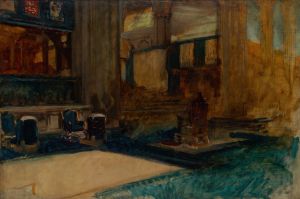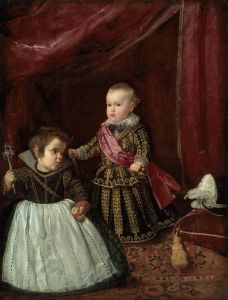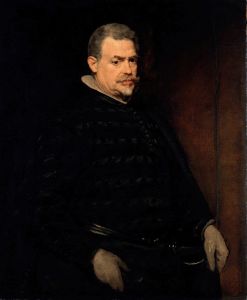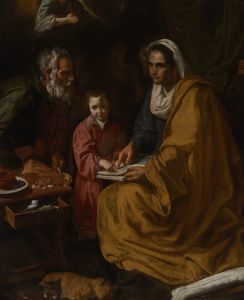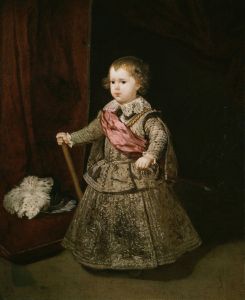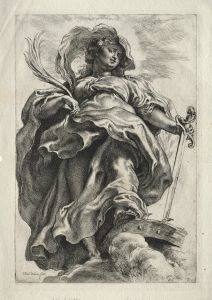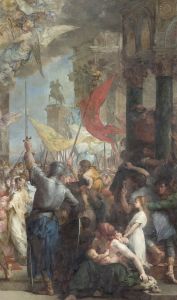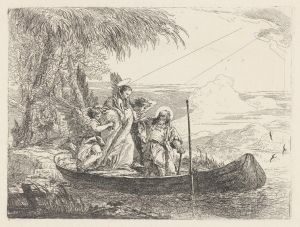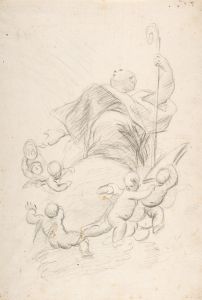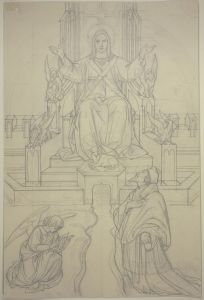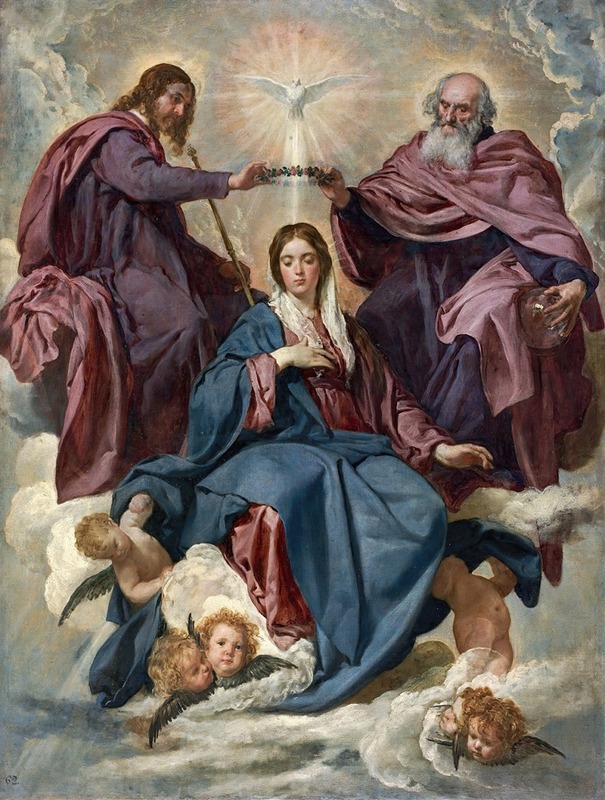
La Coronación De La Virgen
A hand-painted replica of Diego Velázquez’s masterpiece La Coronación De La Virgen, meticulously crafted by professional artists to capture the true essence of the original. Each piece is created with museum-quality canvas and rare mineral pigments, carefully painted by experienced artists with delicate brushstrokes and rich, layered colors to perfectly recreate the texture of the original artwork. Unlike machine-printed reproductions, this hand-painted version brings the painting to life, infused with the artist’s emotions and skill in every stroke. Whether for personal collection or home decoration, it instantly elevates the artistic atmosphere of any space.
Diego Velázquez, one of the most prominent painters of the Spanish Golden Age, created La Coronación de la Virgen (The Coronation of the Virgin) around 1641–1644. This painting is an important example of Velázquez's religious works and is currently housed in the Museo del Prado in Madrid, Spain.
The artwork depicts the Virgin Mary being crowned as Queen of Heaven by the Holy Trinity, a common theme in Christian art. In the composition, God the Father, Jesus Christ, and the Holy Spirit (represented as a dove) are shown in harmony, emphasizing the divine nature of the event. Mary is portrayed in a humble and serene posture, her hands clasped in prayer, while the crown is placed on her head. The figures are surrounded by a celestial atmosphere, with soft clouds and cherubs adding to the ethereal quality of the scene.
Velázquez's mastery of light, color, and texture is evident in this painting. The use of a muted yet rich color palette, combined with his skillful rendering of fabrics and flesh tones, creates a sense of realism and intimacy. The composition is balanced and symmetrical, drawing the viewer's attention to the central act of coronation. The figures are depicted with a naturalism that was characteristic of Velázquez's style, reflecting his deep understanding of human anatomy and expression.
This painting was likely commissioned for a religious institution, as was common for works of this nature during the 17th century. It reflects the Counter-Reformation emphasis on Marian devotion and the glorification of the Virgin Mary. Velázquez, who served as the court painter to King Philip IV of Spain, was known for his versatility, producing not only portraits of the royal family but also religious and mythological works.
La Coronación de la Virgen is considered a significant piece within Velázquez's oeuvre, showcasing his ability to convey spiritual themes with subtlety and grace. While Velázquez is perhaps best known for his portraits, such as Las Meninas, this painting demonstrates his capacity to handle complex religious iconography with the same level of skill and sensitivity.
The painting remains an important example of Baroque religious art and continues to be studied and admired for its artistic and historical significance.





